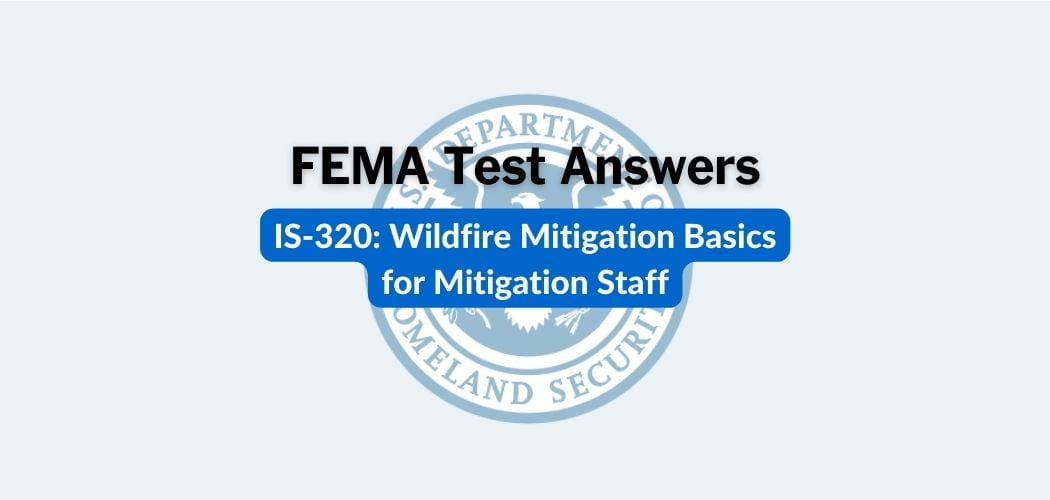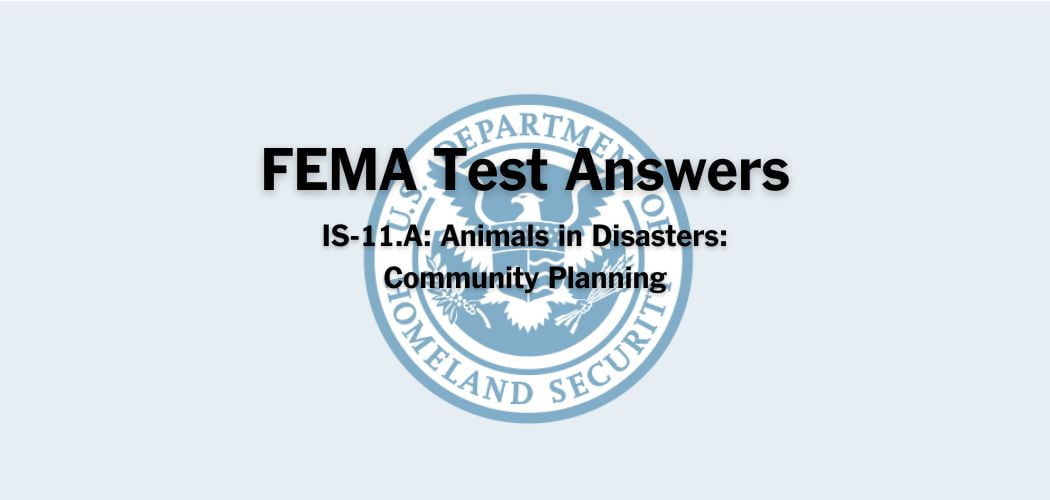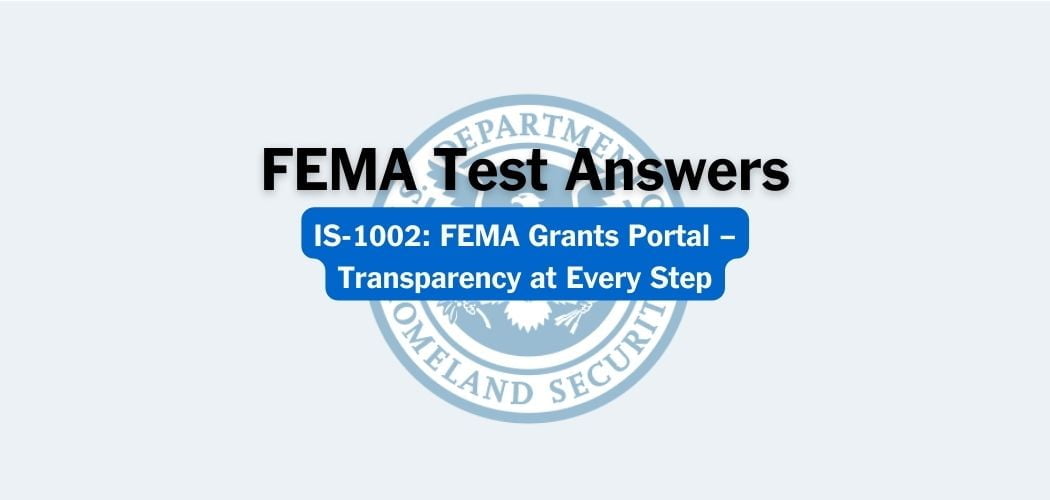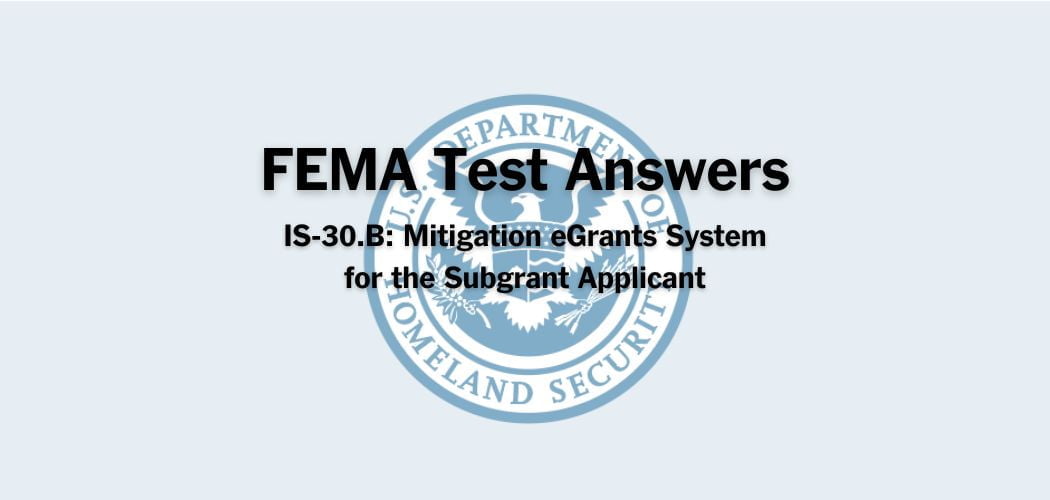Overview: FEMA IS-913.A was published on 11/1/2013 to introduce the skills and tools to effectively achieve results for critical infrastructure security and resilience through partnership and collaboration.
Primary audience: FEMA IS-913.A was designed for critical infrastructure owners and operators from both the government and private sector and those with critical infrastructure duties and responsibilities at the State, local, tribal, and territorial levels.
FEMA IS-913.A test answers
Each time this test is loaded, you will receive a unique set of questions and answers. The test questions are scrambled to protect the integrity of the exam.
Question 1. Which of the following actions will best sustain a collaborative partnership that achieves results?
A. Accept all possible potential partners.
B. Measure results and holds partners accountable.✅
C. Set limits on how long partnership members may be active members.
D. Ensure that action plan metrics are anonymous.
Question 2. Taking time to identify the right partners ensures that:
A. Key players are not left out of the collaborative process.✅
B. The Federal government will recognize your partnership as a corporation.
C. There are clearly identified milestones for each partnership initiative.
D. All people who want to join the partnership can apply.
Question 3. Which of the following is most important for a critical infrastructure partnership agreement to be successful?
A. It should identify partnership representatives by name.
B. It should include urban development planning considerations and guidelines.
C. It should provide an outline of the partnership procedures and functions.✅
D. It should produce quarterly expenditure reports.
Question 4. Benefits for potential new security and resilience partnership members may include all of the following, EXCEPT FOR:
A. Increased opportunity for participation in policy development and initiatives.
B. Potential improvements in operational efficiency.
C. Increased access to information and networks.
D. Fewer regulatory requirements.✅
Question 5. Critical infrastructure partners include all the following groups, EXCEPT FOR:
A. Local Community Arts Council.✅
B. Private-sector owners and operators.
C. Federal Government entities.
D. Academic organizations.
Question 6. Participation in a critical infrastructure partnership provides all of the following benefits for the private sector, EXCEPT FOR:
A. Support for business continuity planning.
B. Access to exercises and training.
C. Guidance with risk assessments.
D. Guaranteed tax reductions.✅
Question 7. The most important benefit of celebrating partnership success by “telling your story” is that it:
A. Establishes connections between critical infrastructure owners and operators and government organizations at all levels.
B. Is needed for action planning.
C. Fulfills requirements to be identified as a Federally-recognized partnership.
D. Allows other partnerships to learn from your challenges and successes.✅
Question 8. Which of the following needs to be determined in order to develop a partnership communication strategy?
A. Whether a Joint Investment Justification is in place to acquire communications equipment.
B. On what information will be shared among partners.✅
C. Protected Critical Infrastructure Information (PCII) program requirements.
D. Protection measures to prevent the two-way flow of information.
Question 9. Fill in the blank. One of the objectives of the _________ is building partnerships to share information and implement critical infrastructure security and resilience programs.
A. The Critical Infrastructure Recovery Plan
B. The National Infrastructure Protection Plan✅
C. The National Preparedness Goal
D. The National Response Plan
Question 10. For a partnership to be successful, leadership primarily should be:
A. Disengaged.✅
B. Cautious.
C. Collaborative.
D. Calculated.
Question 11. Fill in the blank: Leaders working in partnership across multiple organizations or other traditional boundaries can improve their prospect for success by relying more on _______ than on authority.
A. Organization
B. Command
C. Influence✅
D. Sanctions
Question 12. A critical infrastructure partnership’s organizational structure:
A. Must have a Joint Investment Justification.
B. Is established by statute.
C. Must be registered as a Section 501(c)3 entity.
D. Can be either formal or informal.✅
Question 13. In addition to gathering input and developing a simple unifying goal statement, what other step will help you to create a shared purpose for your partnership?
A. Develop metrics for measuring the accomplishment of the goal.
B. Examine how partners’ interests align with the goal.✅
C. Take action to implement shared metrics.
D. Establish ground rules for the development of implementation plans.
Question 14. Collaboration is the process of:
A. Merging several different organizations into one.
B. Working together to identify and achieve shared goals and objectives.✅
C. Coordinating different events to operate a system in unison.
D. Competing for resources between different groups.
Question 15. The Federal Government can contribute to a critical infrastructure partnership by:
A. Ensuring that critical infrastructure is primarily Federally-owned.
B. Enforcing community and homeowner participation.
C. Providing owners and operators with threat analysis and information.✅
D. Establishing mandatory goals and objectives for the partnership.
Question 16. What category of laws requires that public access is provided to government meetings and reports?
A. Federal Advisory Committee Act
B. Section 501(c)3 laws
C. Open meeting laws✅
D. National Protection Framework laws
Question 17. The success of a partnership can be measured by the following, EXCEPT FOR:
A. The impact of the partnership project on critical infrastructure protection and capability building.
B. The effectiveness of the partnership in meeting its goals.
C. The frequency of partnership meetings.✅
D. The perceived cost-to-benefit ratio of participation.
Question 18. A partnership action plan should include the following, EXCEPT FOR:
A. Outlined roles and responsibilities.
B. Human factors assessment.✅
C. A process to evaluate success.
D. Project objectives.
Question 19. Which of the following is a strategy for increasing trust among partners?
A. Establish mandatory participation requirements.
B. Spend time learning about one another.✅
C. Restrict information flow within the group and to outside sources.
D. Apply one group’s organizational culture to the partnership as a whole.
Question 20. Information designated as Federal Protected Critical Infrastructure Information (PCII) Program is:
A. Used for regulatory purposes.
B. Protected from disclosure laws.✅
C. Recorded anonymously.
D. Classified as threat information.
Question 21. Which of the following is an advantage of an informal partnership?
A. Informal partnerships tend to be less structured and provide more freedom to explore new ideas.✅
B. An informal partnership has a low priority with member organizations.
C. Informal partnerships tend to have greater influence and recognition.
D. Legal restrictions on actions by informal partnerships limit the scope of their activities.
Question 22. Factors critical to effective critical infrastructure partnerships include all of the following, EXCEPT FOR:
A. Generating clearly identifiable membership benefits.
B. Establishing effective, timely, and appropriately secure communication.
C. Fostering trust, equity, and respect.
D. Determining sanctions for lack of participation.✅
Question 23. Effective information sharing involves all of the following EXCEPT FOR:
A. Instituting bi-directional, horizontal, and vertical information-sharing relationships.
B. Establishing clearly defined information-sharing roles, rules, and responsibilities among members.
C. Employing an accepted process for sharing relevant threat and disaster information among members while protecting that information.
D. Ensuring that Protected Critical Infrastructure Information (PCII) is fully accessible to the public.✅
Question 24. Metrics provide:
A. Estimates of the predicted commitment of partners to partnership goals.
B. Measurements in both the metric system as well as the U.S. equivalent.
C. A set of measurements that quantify results.✅
D. Pre-determined results of action plans.
Critical Infrastructure Security and Resilience Curriculum
Foundational courses
Security awareness courses
- IS-906: Workplace Security Awareness
- IS-907: Active Shooter: What You Can Do
- IS-912: Retail Security Awareness: Understanding the Hidden Hazards
- IS-914: Surveillance Awareness: What You Can Do
- IS-915: Protecting Critical Infrastructure Against Insider Threats
- IS-916: Critical Infrastructure Security: Theft and Diversion – What You Can do
Sector-specific courses
- IS-870: Dam Sector: Crisis Management
- IS-871: Dam Sector: Security Awareness
- IS-872: Dam Sector: Protective Measures
- IS-1170: Introduction to the Interagency Security Committee (ISC)
- IS-1171: Overview of Interagency Security Committee (ISC) Publications
- IS-1172: The Risk Management Process for Federal Facilities: Facility Security Level (FSL) Determination
- IS-1173: Levels of Protection (LOP) and Application of the Design-Basis Threat (DBT) Report
- IS-1174: Facility Security Committees



